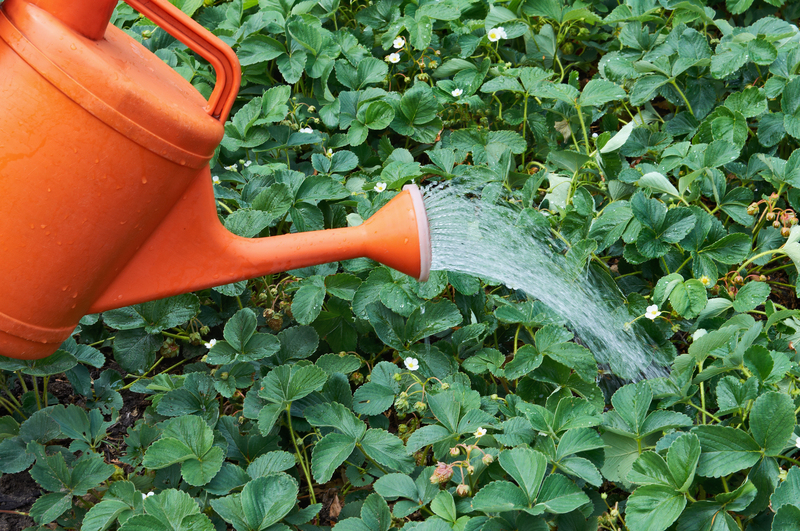The Artistic Gardener's Guide to Hedge Trimming Shapes
Posted on 03/07/2025
The Artistic Gardener's Guide to Hedge Trimming Shapes
Hedge trimming is much more than a routine gardening task; it is an art form where creative expression meets botanical science. From the stately, geometric hedges of French chateaux to imaginative animal-shaped topiaries, shaped hedges are the hallmark of the accomplished artistic gardener. Whether you're an enthusiastic beginner or a seasoned horticulturist, this comprehensive guide will help you master the art of hedge trimming shapes and transform your garden into a living masterpiece.
Understanding Artistic Hedge Trimming
Before picking up the shears, it's essential to comprehend what distinguishes artistic hedge trimming from mere pruning. Artistic hedge shaping combines aesthetic principles, plant science, and precise skills to sculpt hedges into decorative or functional forms. By learning and integrating different hedge trimming techniques, gardeners can add visual interest, unique structure, and personality to outdoor spaces.
Why Shape Hedges? The Value of Artistic Hedge Trimming
- Curb Appeal: Shaped hedges increase property value and draw admiration from passersby.
- Structural Definition: Formal shapes create symmetry, direct the eye, and divide garden areas.
- Creativity: Topiary allows personal expression through living sculpture.
- Biodiversity: Varied shapes and sizes provide shelter for wildlife.
- Seasonal Interest: Well-trimmed hedges remain attractive all year long.

Choosing the Right Plants for Artistic Hedge Trimming
Not every shrub or plant responds well to intricate hedge shaping. The most successful hedge species exhibit dense, compact growth, respond well to frequent pruning, and feature small leaves for crisp lines. Here are some top choices:
- Buxus sempervirens (Boxwood): Classic favorite for formal shapes and topiary.
- Taxus baccata (Yew): Adapts well to geometric and freeform hedges.
- Ligustrum (Privet): Fast-growing and tolerant, great for curves and spirals.
- Ilex crenata (Japanese Holly): Resembles boxwood, ideal for smaller spaces.
- Lonicera nitida (Shrubby Honeysuckle): Quick to fill out, tolerates complex shapes.
Tip: For more adventurous topiary, consider Laurus nobilis (Bay Laurel), Photinia, or even Pittosporum varieties that offer distinct foliage color and texture.
Essential Tools for Artistic Hedge Trimming
The foundation of every beautifully shaped hedge lies in precise, regular cuts made using the right equipment. The following tools are must-haves for artistic hedge shaping:
- Hand Shears: For maximum control and detail work.
- Hedge Trimmers (Electric or Gas): Best for large, straight stretches.
- Topiary Shears: Small and sharp, perfect for fine shaping.
- Loppers: For removing thicker branches within the hedge.
- String Lines and Stakes: To maintain level and straight lines.
- Wire Frames or Templates: Supports geometric or animal shapes until the plant matures.
The Art and Science of Hedge Trimming Shapes
Every artistically trimmed hedge starts with a vision, but achieving that vision is a blend of planning, patience, and informed technique. Here are the core stages for mastering hedge shaping art:
1. Planning Your Hedge Shapes
- Assess the Space: Map out sun exposure, wind patterns, and available space for growth.
- Consider the Function: Are you creating a boundary, a backdrop, or a focal point?
- Choose your Style: Do you want formal lines, undulating waves, whimsical animals, or abstract shapes?
- Sketch Your Vision: Draw designs or find inspiration in gardening books and online galleries.
2. Establishing the Shape
- Plant at the Correct Spacing: Hedges too crowded or spread will struggle to form neat shapes.
- Frame and Template: Use wire frameworks for complex figures or geometric outlines to guide early growth.
- Early Pruning: Start shaping when plants are young and flexible. Remove wayward shoots and encourage bushiness.
3. Regular Shaping and Trimming
- Consistent Cutting: Two to three trims a year are ideal for most species, with light touches between for detail.
- Maintain Taper: Always trim sides so the bottom is wider than the top (the classic 'A' or wedge shape) for light penetration.
- Don't Overcut: Avoid exposing bare wood, as this can reduce vigor and spoil the effect, especially on older hedges.
4. Patience and Refinement
- Allow Time to Mature: Artistic shapes may take several years to fully develop.
- Refine Annually: Each season is an opportunity to perfect definition and proportion in your hedge shapes.
Popular Hedge Trimming Shapes to Master
The world of artistic hedge trimming offers limitless creativity, but certain shapes are especially favored for both their beauty and their gardening challenge. Here are the classics to try:
The Geometric Styles
- Rectilinear (Straight-edged) Hedges: The backbone of formal gardens, these are tough to perfect but make a strong visual statement.
- Curved Forms: Arches, ribbons, and undulations break up harsh lines and add softness. Best paired with straight hedges for contrast.
- Pyramids, Cones, and Spheres: These tidy, three-dimensional shapes require a steady hand and even growth. Start with a frame or template for guidance.
The Topiary Masterpieces
- Animal Forms: From peacocks to elephants, animal topiary showcases the gardener's imagination and dedication.
- Spirals and Corkscrews: Especially striking with conifers and privet. Use a pole and string guideline for accuracy.
- Obelisks and Columns: These vertical shapes draw the eye and add height without blocking views.
- Abstract Topiary: Freeform swirls, clouds, or cubes let creativity take center stage.
Living Sculptures: Advanced Artistic Shapes
- Mazes and Parterres: Large estates often utilize labyrinths or intricate knot gardens developed from trimmed hedges.
- Lettering and Messages: Some gardeners etch initials or greetings into flat-topped, broad hedges.
- Themed Topiary Gardens: Design entire sections based around a motif, such as chess pieces or fairy tale scenes.
Mastering Technique: Essential Tips for Artistic Hedge Shaping
Achieving flawless, eye-catching hedge shapes requires more than just a good idea--it demands proper horticultural technique and an understanding of plant physiology. Here are the most important tips:
1. Cut at the Right Time
- Spring Trimming: Light shaping as new growth appears. Avoid heavy trims until after the surge of spring growth.
- Summer/Fall Trimming: Maintain neatness and reinforce the shape before winter dormancy.
- Winter Pruning: Only for hardy species. Avoid in frosty conditions as cuts may not heal quickly.
2. Work With the Plant's Natural Shape
- Select the Right Plant: Don't force tight geometrics on shrubs with lax or open growth forms. Choose what the plant can sustain.
- Let the Framework Develop: Especially for topiary, let major branches establish before refining the details.
3. Sharpen and Clean Tools Regularly
- Clean Cuts: Dull blades shred leaves, increase disease risk, and create a ragged appearance.
- Disinfect Tools: Especially between different plants to prevent disease spread.
4. Step Back Frequently
- Perspective is Key: Pause regularly to view your work from different angles and distances to ensure symmetry and balance.
Pro tip: For large or complex hedges, use flags, chalk lines, or colored twine to outline the desired shape directly onto the foliage.
Common Mistakes in Artistic Hedge Trimming (And How to Avoid Them)
- Neglecting Taper: Trimming hedges vertically narrows the lower part, starving leaves at the base of light and causing thinning. Always maintain a wider base.
- Cutting During Hot Weather: Freshly trimmed leaves can scorch and brown; opt for cooler, overcast days.
- Trimming at the Wrong Time: Avoid cutting tender new growth just before frost, which can damage the plant.
- Over-shaping Young Hedges: Allow adequate filling out before imposing hard lines or detailed figures.
- Using the Wrong Tools: A small detail is easily ruined by a large trimmer. Match your tool to the task.
Inspiring Examples of Artistic Hedge Trimming Shapes
If you are seeking design ideas, explore the following famous gardens that exemplify the art of hedge shaping:
- Versailles, France: Impeccably geometric parterres and massive topiaries.
- Hampton Court Maze, England: One of the world's oldest hedge labyrinths.
- Levens Hall, England: Iconic topiary animals, abstract forms, and living chess pieces.
- Chateau de Villandry, France: Ornate, color-coordinated boxwood parterres.
- Disneyland Parks: Playful topiary characters proving that creative hedge trimming is only limited by imagination.

Caring for Your Artistic Hedges Year-Round
To preserve your carefully crafted artistic hedge trimming shapes for years to come, general shrub health is vital. Here are some essential care tips:
- Soil Improvement: Work in organic matter or mulch regularly.
- Water Regularly: Especially with young or recently trimmed hedges.
- Feed Appropriately: Use slow-release fertilizer in spring.
- Monitor for Pests and Diseases: Early intervention prevents major setbacks.
- Replace or Fill Gaps: Don't hesitate to replant small sections; consistent density enhances definition.
Conclusion: Shaping the Living Canvas
Practicing the artistic gardener's guide to hedge trimming shapes is about continual growth--both your garden's and your own. The most dazzling hedge features aren't built in a day, but with attentive care, steady hands, and an open mind, your hedge trimming artistry will flourish.
From basic box shapes to fantasy topiaries, every garden can benefit from the structure, creativity, and charm of artfully shaped hedges. With patience and the techniques detailed in this guide, your landscape can become a unique reflection of your imagination, transforming hedges from mere garden boundaries into captivating works of living art.

